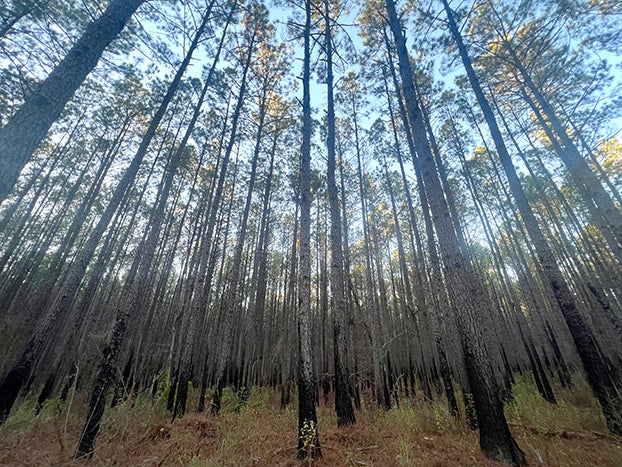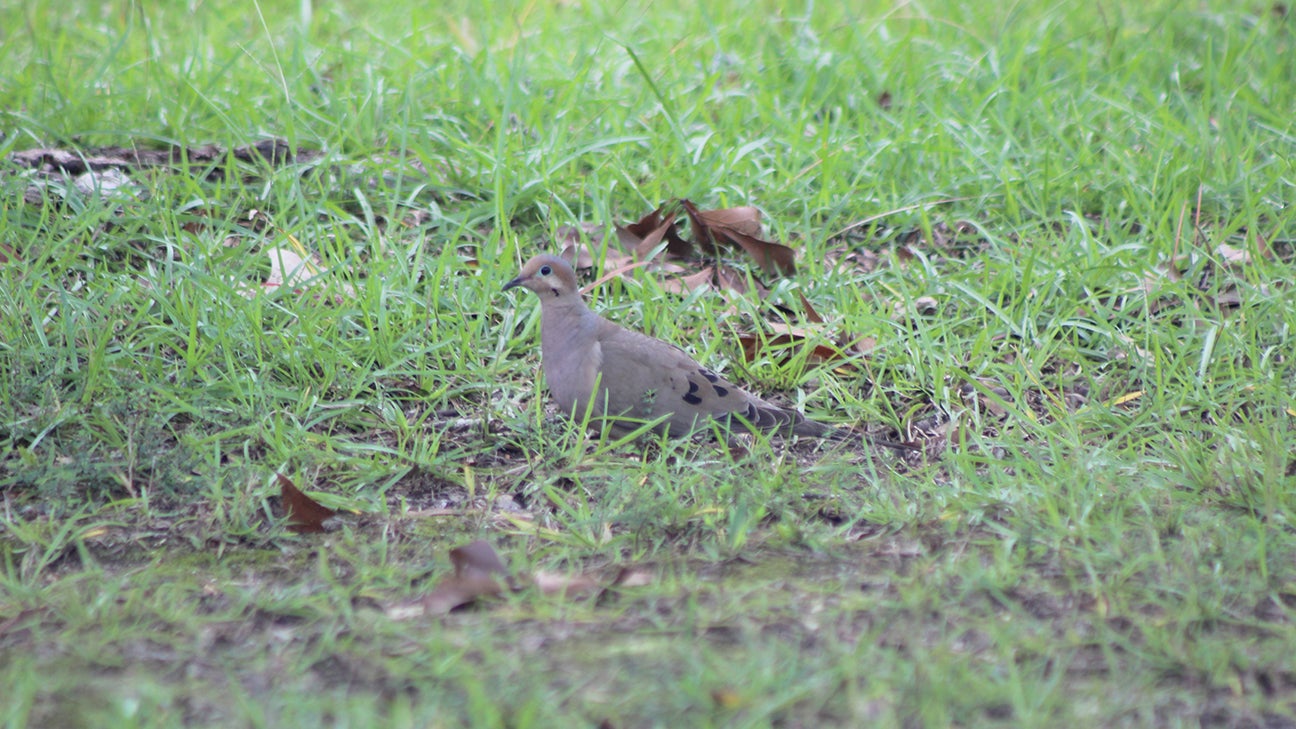Year full of challenges as Homochitto National Forest works towards longleaf vision
Published 10:13 am Saturday, December 30, 2023

- This is a young pine stand in the Homochitto National Forest. The charred black bark is from prescribed fires in the unit used to limit wildfire danger and regenerating forage and browse. Work is being carried out on the national forest to convert pine stands dominated by Loblolly into longleaf pine stands. (Hunter Cloud | The Daily Leader)
BROOKHAVEN — Homochitto National Forest covers 200,000 acres of land in Southwest Mississippi and provides a vital habitat and ecosystem. Established in 1936, the Homochitto National Forest faced challenges in 2023 as it worked towards meeting a new vision.
District Ranger Shaun Williamson said the Homochitto National Forest has encountered pestilence, heat, drought and fire in 2023. The problems are not limited to the national forest as private land and Mississippi State Parks have suffered from problems caused by drought which brings on an influx of bugs and wildfire damage this year.
The Mississippi Forestry Commission is currently working to estimate how serious the southern pine beetle damage is in the state. Williamson said they had a few hundred spots on the Homochitto National Forest with pine beetles. He could not give an acreage estimate of the losses caused. The trees could not be salvaged but the intense heat and drought may have helped rather than hurt the forest.
“The bug activity really fell off due to the drought and high heat. Cutting trees wasn’t going to help a whole lot and while the heat and drought were a trigger for the bugs it also hit a point where it slowed them down,” Williamson said. “I have not ever seen it in my career where the heat was so high the bugs responded negatively to it.”
He added the National Forest had some problems with the Ips beetle but Ips do not damage timber stands like southern pine beetles can.
Williamson said they will continue to monitor the beetles and see what happens.
“My hope is the high heat and long drought will set them back. They can be cyclic,” Williamson said. “I hope it has turned them back another cycle but it could also be bad this spring. We will have to treat it as soon as possible. We have been trying to add more ways to treat bugs to our toolbox.”
One of the ways the national forest can treat southern pine beetles is cut and remove which brings bugs out of the forest. Pine beetles left standing dead timber in some stands. Williamson said they could be a safety issue for contractors working on management.
Working towards a vision
Williamson said the Homochitto National Forest is currently working towards a new vision. Ecosystem management is one of the biggest focuses of the forest as they work to provide quality habitat for deer, turkeys and other native wildlife.
People might think about the Homochitto National Forest providing habitat and hunting opportunities for deer and turkeys but several other non-game species call it home. One animal in particular needs the habitat offered on over half of the HNF.
Pileated Woodpeckers are dependent on mature open pine forests which are maintained with a frequent fire regime. In 1992, Homochitto National Forest set a goal to have 250 breeding pairs of Pileated Woodpeckers in 35 years.
According to the HNF action plan, 200 breeding pairs of pileated woodpeckers are on the national forest and their lofty goal is to reach 250 breeding pairs by 2025.
Another way the Homochitto National Forest is working towards improving the ecosystem is converting the district into longleaf pine. It will take a lot of management to convert the loblolly dominated timber into longleaf but it should be worth it.
A benefit of removing loblolly pines is it should combat against southern pine beetles. Loblolly isn’t as strong against the pests as longleaf is.
“Loblolly is in an area where it shouldn’t be. Mother nature is taking out what shouldn’t be here,” Williamson said.
One way the Homochitto National Forest is converting to longleaf pine is by cutting loblolly stands, selling the timber and using the proceeds to plant longleaf pine. Another way they manage longleaf pine is by thinning what is already there and allowing longleaf pines to grow.
One tool used in managing the understory is prescribed fire. Longleaf systems tolerate fire and promote fire which in conjunction with sunlight getting to the forest floor promotes native grasses and forbs instead of woody brush. It provides a beneficial habitat for wildlife.
Williamson said the big project is being done in stages. Drought set the national forest back as has wildfire.
Homochitto National Forest fought 1,500 acres of fire from August to December and aided the Mississippi Forestry Commission in fighting fires on 1,500 acres of private land.
The drought and heat allowed for fires to reburn in some parts of the forest. Williamson said they had not seen stands burn repeatedly after the initial fire. Some burned five times and they were constantly fighting fires.
While the places burned by wildfire could allow for great habitat for wildlife it could be a year before the forest service can start to understand the impact.
“We don’t know. We have lost trees, numerous pines since the wildfires. Longleafs love fire but some of them have died,” Williamson said. “Large trees are dying, not just the young ones. The roots got too hot and dry. With all of it together, we have never seen anything like this before. We will see. I think the under story will look beautiful in a year and will do great things. I’m curious about the overstory.”





